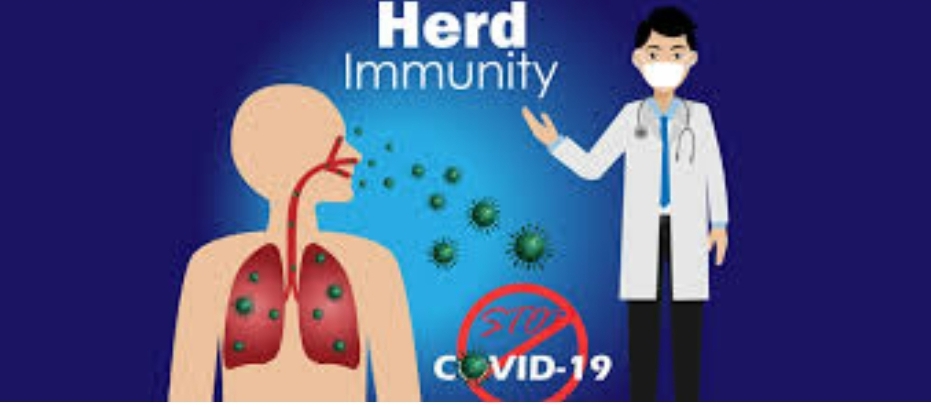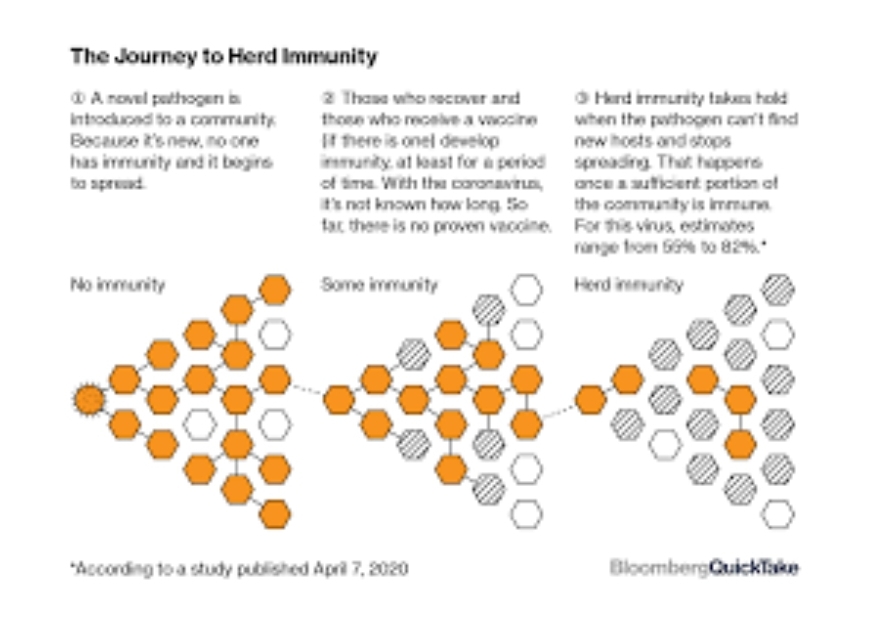As most of the countries of the world are attempting to suppress the spread of the novel corona-virus, some are taking a distinct approach- trying to manage the pandemic through so-called “herd immunity”.
Herd immunity implies letting an enormous number of individuals come down with an infectious disease, and consequently creating resistance to it, to stop the infection from spreading further.
A “Group Resistance” System or “Herd Immunity” has been condemned by the World Health Organization, while other specialists agree, stating that the methodology is hazardous even under the least favourable conditions.

First, let’s understand immunity
Our bodies fight infectious diseases, for example the present infection of coronavirus through our immune systems. The body produces antibodies in response to intruding organisms in order to expel them. When the body has fended off an illness, it holds a “memory” of the germ, which is a recognition of how to battle it quicker, the following time.
When an individual has created insusceptibility to an infection, they likely won’t get it once more. The hypothesis behind crowd resistance is that once many individuals create invulnerability to an infection, it will in the end quit spreading to individuals who haven’t yet gotten it.
Number-crunching on herd immunity
Herd immunity is essentially a numbers game. It all rests on the basic reproduction rate – in other words, how many new infections each case will generate.
A rate with a value of 1 would mean that one person can pass it on to at least one other person. The higher this number, the more infections from that one case. So, to end the spread, this number will need to drop below 1.
The reproduction rate for coronavirus is between 2 and 3.
As infection spreads, the pool of susceptible people shrinks as more develop immunity. Herd immunity aims to lower the number of susceptible people to the point where the reproduction rate drops below 1 and the spread of infection stops.

The Situation of India
India is endeavouring hard to contain coronavirus pandemic alongside the world. However, the fight against the lethal infection can be won uniquely through a powerful technique. Up until now, many nations are occupied in discovering an antibody, but it is tough to state the approximate time it will take to do so. In many news it is said that vaccines are ready but still there is no proof of it.
And if the vaccines are ready there is no time frame given in how much time the vaccine would reach Indian Hospitals. Many doctors are saying that it will still take at least 6 months for the vaccine to reach hospitals after it is made.
In such a circumstance, India may fall back on Plan B to battle against COVID-19 through “Herd Immunity”, which can end up being a game breaker. Under this plan, the country has to create resistance against the novel coronavirus in a majority of its population.
Herd immunity is identified with a situation under which individuals create insusceptibility against some infection and they become resistant to that ailment or disease. The Herd immunity can be made through an immunization or individuals may naturally create resistance subsequent to getting tainted with the coronavirus.
This immunity can prove to be a panacea against the COVID-19. This resembles infusing an antibody among kids to create immunity against pneumonia and meningitis, in this way making them safe against such illnesses when they grow-up. In India, if a large number of people develop resistance against the coronavirus, then the pandemic can be defeated.
The question that now arises, is whether the test of herd immunity has begun in India or essentially an arrangement is being made to start it under Plan B. Authoritatively, there is no such effort but the way things are going ahead one should not be surprised if Indians develop immunity against the disease.

Indian areas are separated into three zones of Green, Orange and Red zones. More than 43 percent of the population falls under the green zone, where individuals are getting relaxations in the lockdown with specific conditions.
In these regions, inhabitants may experience the test of Herd Immunity, as shops, markets, workplaces, cars, taxis, transport administrations, business and modern exercises have started running with the consistence of social distancing. Individuals are going to different spots in the midst of the danger of disease in 43 percent of the locale. Green zones may give some insight to the group invulnerability and this would at last lessen the danger of coronavirus disease.
Somewhat, it very well may be named as a trial of Herd immunity since Green Zones have so far not revealed even a solitary COVID-19 case over the most recent 21 days. Despite what might be expected, the genuine trial of crowd insusceptibility would be in the Red Zones when such exclusions are given.
Countless individuals would initially get tainted, yet in the long run this would create invulnerability against it. This could be a genuine case of Herd Immunity.
BY- SIDDHANT JAIN
Literacy source-1. https://theconversation.com/amp/the-herd-immunity-route-to-fighting-coronavirus-is-unethical-and-potentially-dangerous-133765
Image Source-1. https://www.bloombergquint.com/coronavirus-outbreak/a-herd-immunity-strategy-could-actually-work-in-youthful-india




